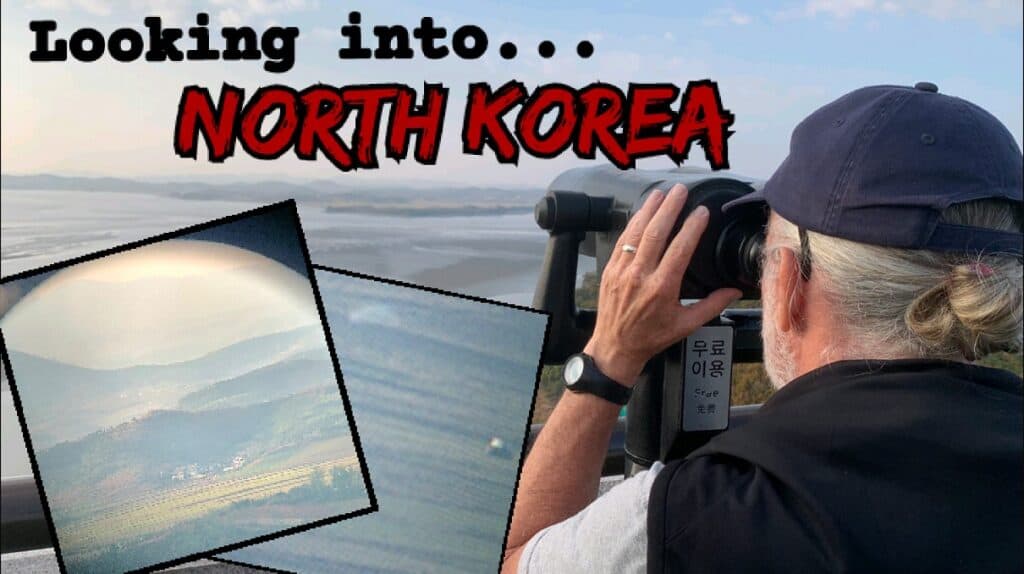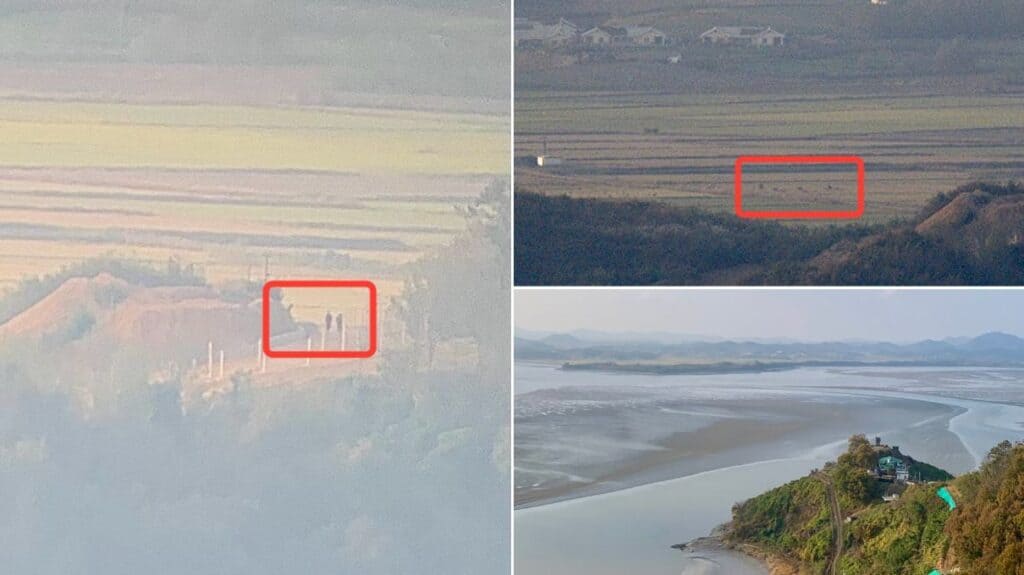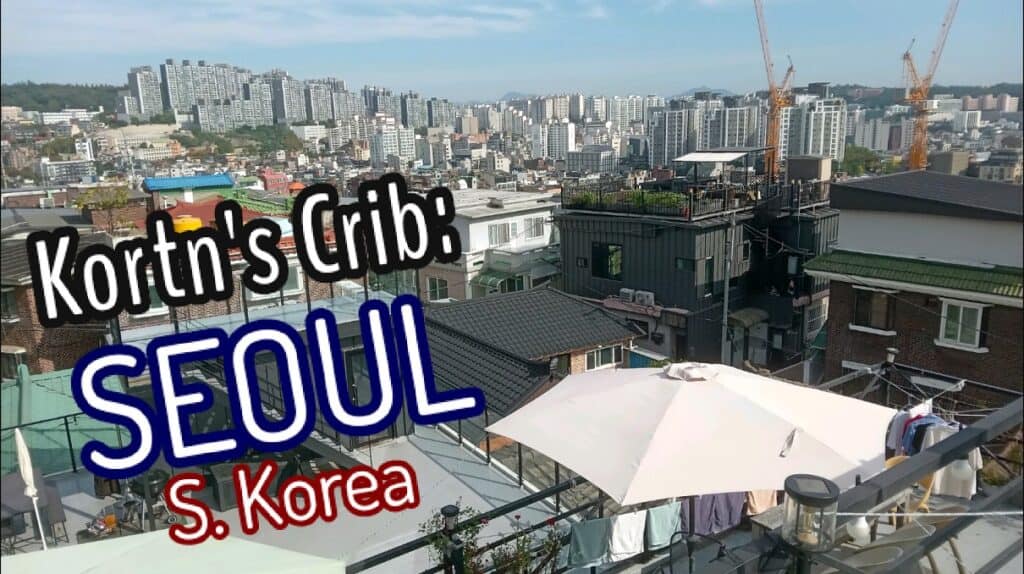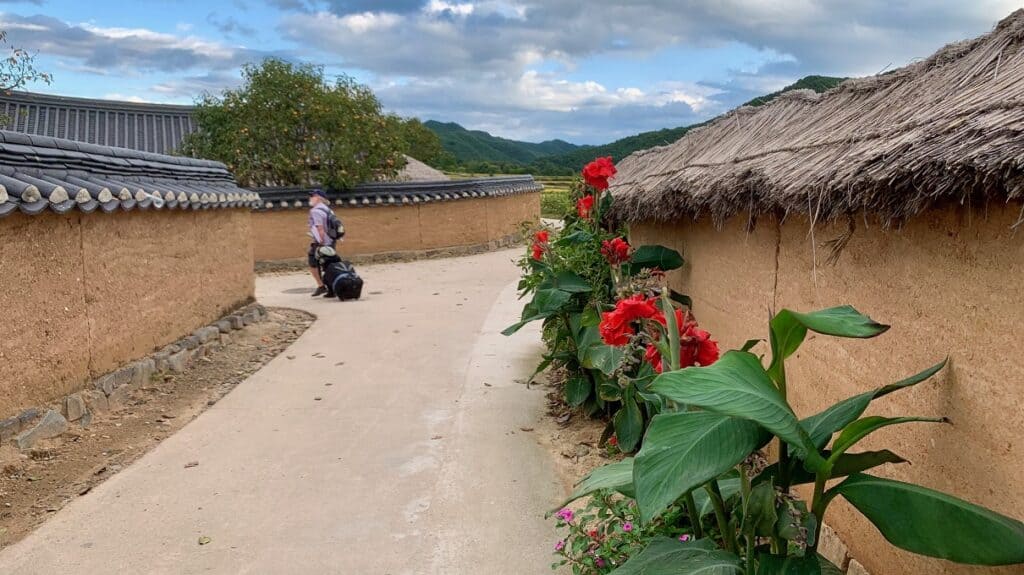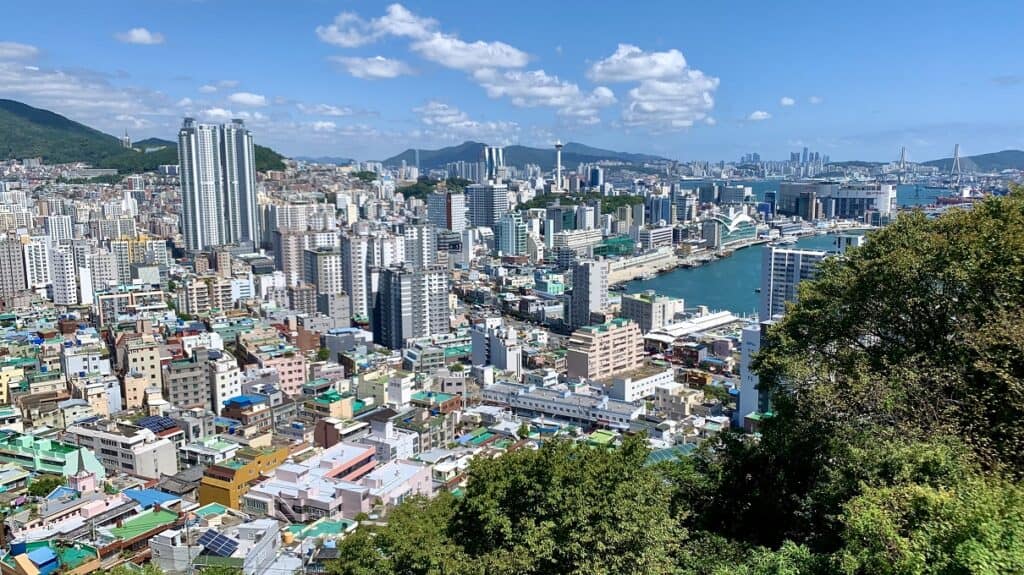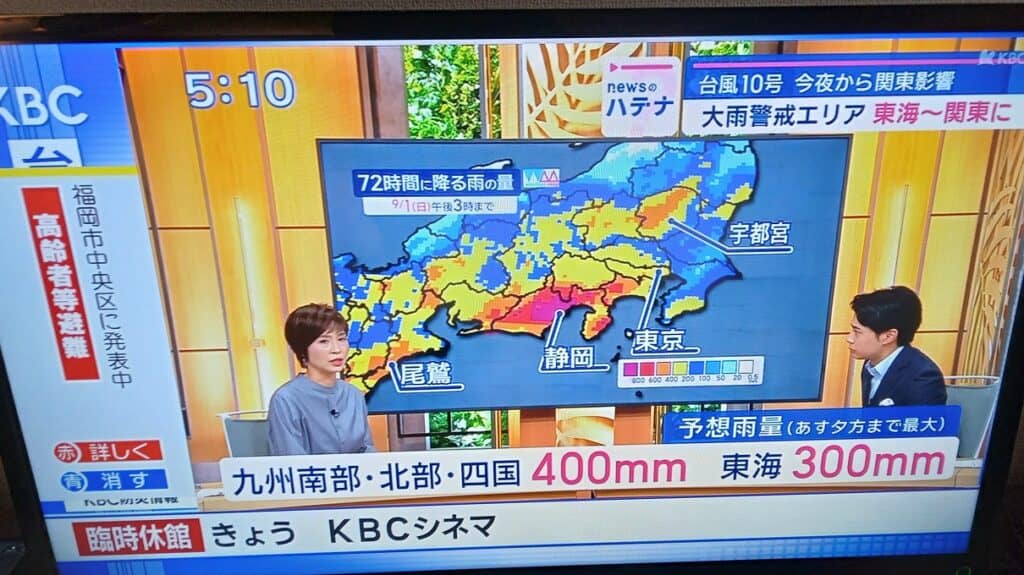Living in Seoul, South Korea put us just 30 miles from the North Korean border.
During our month-long stay, the northern nation — and its maniacal dictator Kim Jong Un — made headlines: threats of nuclear annihilation, missile tests, spies and defectors, propaganda balloons.
The two Koreas are technically still at war. The uneasy truce, signed in 1953 to halt the Korean War, remains in effect. But both countries are always on high alert.
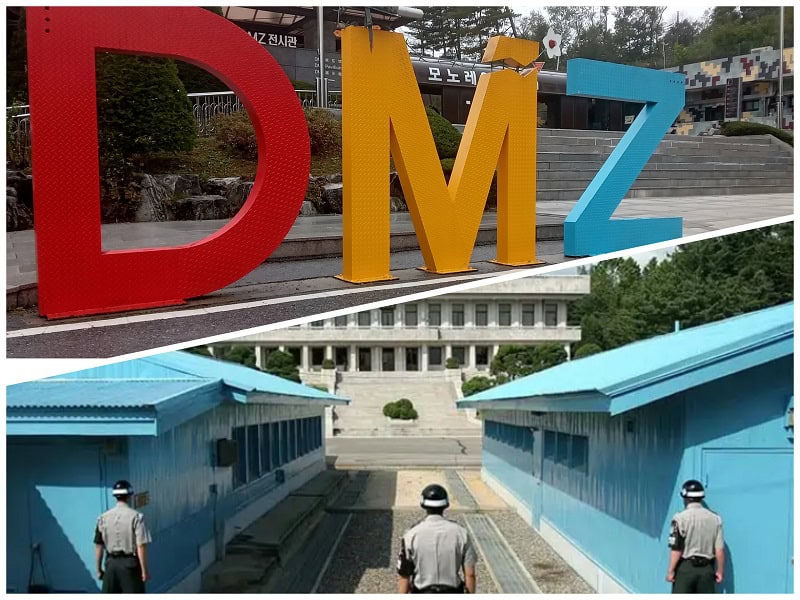
In fact, the week we arrived in Seoul, the DMZ (Demilitarized Zone) was briefly closed to the public after the North blew up some border infrastructure and the South fired warning shots. Further, the Joint Security Area (pictured above) has been closed to tourists since July of 2023.
On top of all that, during our stay, North Korea made headlines around the world by sending troops to Russia to join in the Ukraine conflict.
Still, as American visitors, we wanted to tour the DMZ — and did so asap. Here’s a link to how we first did it.
Now after more weeks in Seoul we’ve been back to the border again, twice — drawn by the intrigue and oddity of the place. In the process we’ve discovered the easiest way, to actually view North Korea and the people living there.
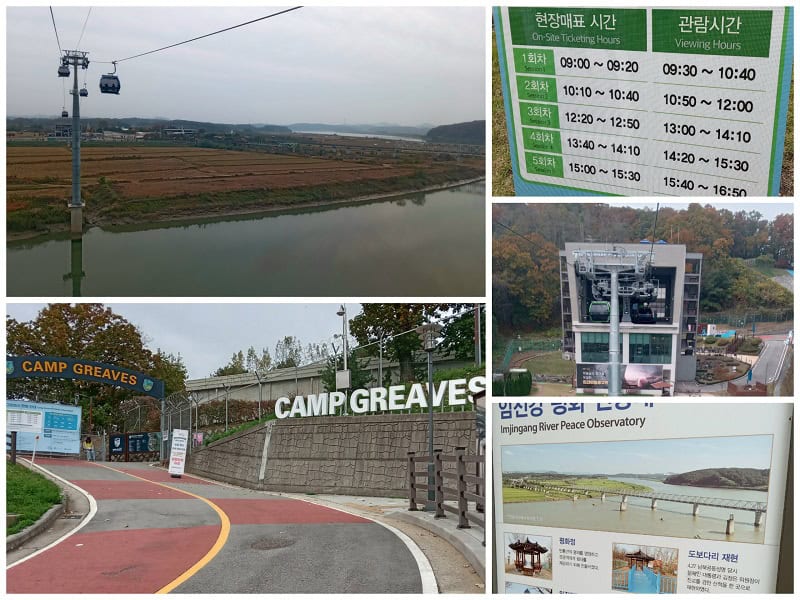
Camp Greaves gondola
After doing the ‘standard DMZ tour’ we realized there was much more to see at the popular South Korea DMZ visitor area known as Imjingak. We retraced our route on public transit (90 minutes each way from central Seoul), returned to Imjingak, and spent another afternoon taking in the DMZ.
This time, our main activity was the cable car/gondola ride from the Imjingak visitor center across the Imjin River and into the CCZ (Civilian Control Zone) to ‘Camp Greaves’ — a former forward military base for U.S. troops (until 2004) that is now a kind of open-air museum. (Passport required.)
The round-trip gondola ride itself cost 11,000 Korean Won ($8.50) and is a surreal way to overview the southern side DMZ territory where men from both sides fought and died in the early 1950s.
At the terminus of the one-mile cable-car ride, there are historical displays, gift shops, cafe, and rooftop terrace. Nearby is a viewing area looking back toward the south and several markers/memorials, maps, and other war information. This could all be seen in 45 minutes to an hour.
For an additional 3000₩ ($2.25), timed guided tours of the former Camp Greaves military compound are also available. Tours are limited to 100 persons and advertised as taking 70 minutes. The specific ticket sales and tour times are posted. Amazingly, only my wife Ellen and myself were on the 14:20 tour. (We noted about 20 people finishing the tour before us – and dozens gathering for the next tour after).
The tour itself was interesting but incomplete and disappointing. Honestly, 70 minutes is not nearly enough to take in all that is presented at this unique museum. Thankfully, our guide Kelly spoke good English and did her best to answer our many questions. But given the time constraints, we were basically forced to march through the restored base with only the most basic explanations. No fault of hers, but we were unable to explore what looked to be very extensive exhibits detailing Camp Greaves and its history at the Korean DMZ.
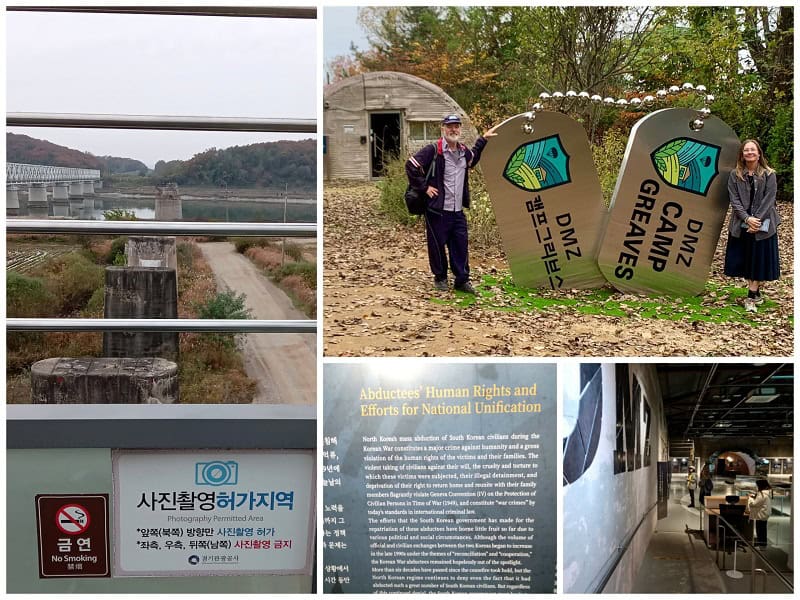
It was the kind of place we could have spent half a day. But the schedule and security sensitive location made that impossible. In fact, we were escorted throughout our tour by both civilian and military supervisors. And our movements and photos were closely controlled. Oddly, we saw a youth hostel which operates at Camp Greaves (with similar heavy restrictions), and some young Koreans looked to be doing some video production at the facility (also under strict supervision).
In all, the Camp Greaves experience was worth the time and money – but could have been so much better. Be aware, the Camp Greaves tour is separate from the standard DMZ tours that most tourists sign up for. However, if you came early, it would be possible to do both tours in one day. Indeed, a few tour operators do offer transportation and both tours from Seoul. For us budget slow travelers, the leisurely, ‘do-it-yourself’, public transit, lower-cost option worked best.
After the Camp Greaves cable car, we spent a couple more hours wandering around the Imjingak visitor area. We paid a couple bucks to walk out on an old destroyed bridge in the CCZ and go through a former underground command bunker. We also viewed more of the Korean War-related displays and memorials that cover the area.
Finally, we visited the interesting “National Memorial for Abductees” — a sorrowful and shocking exhibit hall which details the kidnapping of thousands of South Korean civilians by the North from areas under their military control during the early part of the war (mostly July, August, September of 1950). There was little English translation, but the free exhibit powerfully exposed the ongoing pain of families in the South who’s loved ones disappeared and were never heard from again (North Korea denies any abductions ever occurred).
The best view into North Korea
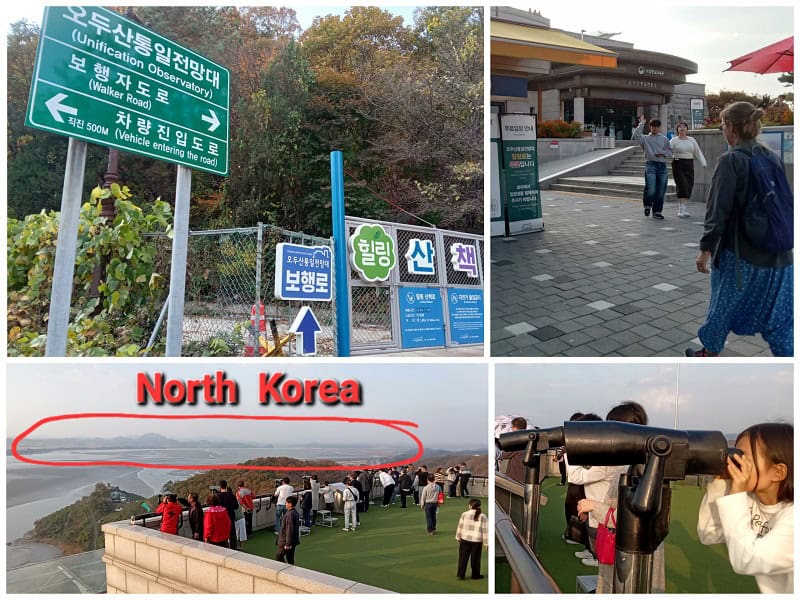
While on the cable car tour, a Korean old-timer who spoke decent English suggested another border destination we might enjoy. Sure enough, the Odusan Unification Observation Deck turned out to be a fantastic and ‘high-value’ experience.
Using Google Maps, I confirmed the practicality of taking the number 2200 Seoul city bus from the Hapjeong Subway Station to the “National Folk Museum of Korea at Paju” stop — about a 45 minute bus ride west from Hapjeong.
From the National Folk Museum Paju, it was about a two kilometer walk on a pleasant uphill pedestrian roadway to the hilltop Odusan Observatory. (The local 33 bus goes part of the way from the Folk Museum bus stop too.)
From the different areas of the Odusan Observatory we had a clear view of North Korean territory — about one mile away across the junction of the Imjin and Han rivers.
Using the free mounted binoculars and electronic view screens, we could clearly see North Korean people farming the fields, riding bicycles, repairing roads and fences, and border security posts and personnel.
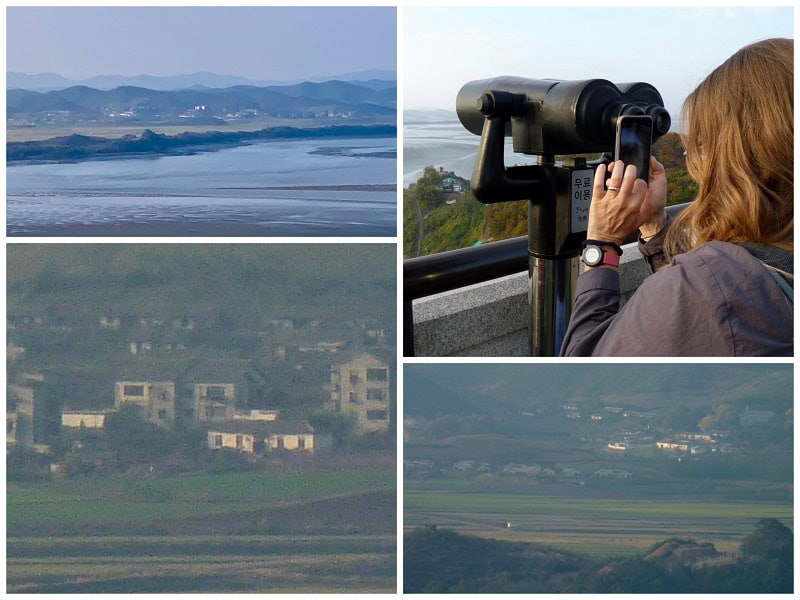
It was the best view we had of North Korea – and the people there – on any of our border visits. All free of charge and without any security checks, passport requirements, or military supervision, which are necessary for the Imjingak DMZ tours.
For whatever reason, the Odusan Observatory does not seem to be promoted to tourists. We saw no organized tour offerings from Seoul. Indeed, it was a ‘no frills’ kind of local experience (there is a cafe and gift shop). But we highly recommend this off-the-radar excursion to any visitors with time and a sense of adventure who might be in Seoul.
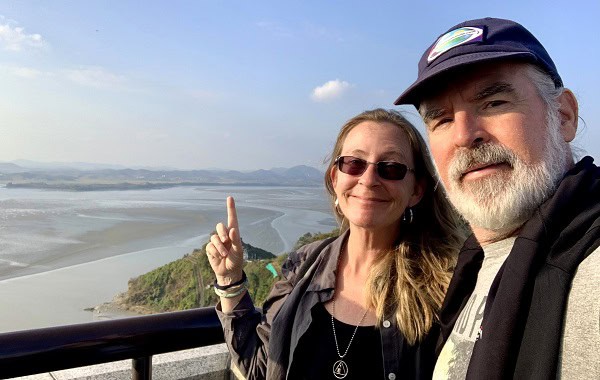
As always, be thankful and generous, happy trails & more beer.
Life is NOW!
Thanks for reading, “Looking into North Korea.”
About Theo
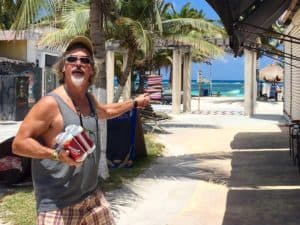
Theo (also called Tedly) retired early from the news business to wander the planet with his wife, Ellen. He enjoys exploring all Earth has to offer from jungles and beaches to volcanoes and deserts, always drinking beer along the way.
More about South Korea:

What it cost to live in Seoul 1 month as budget slow travelers
Theo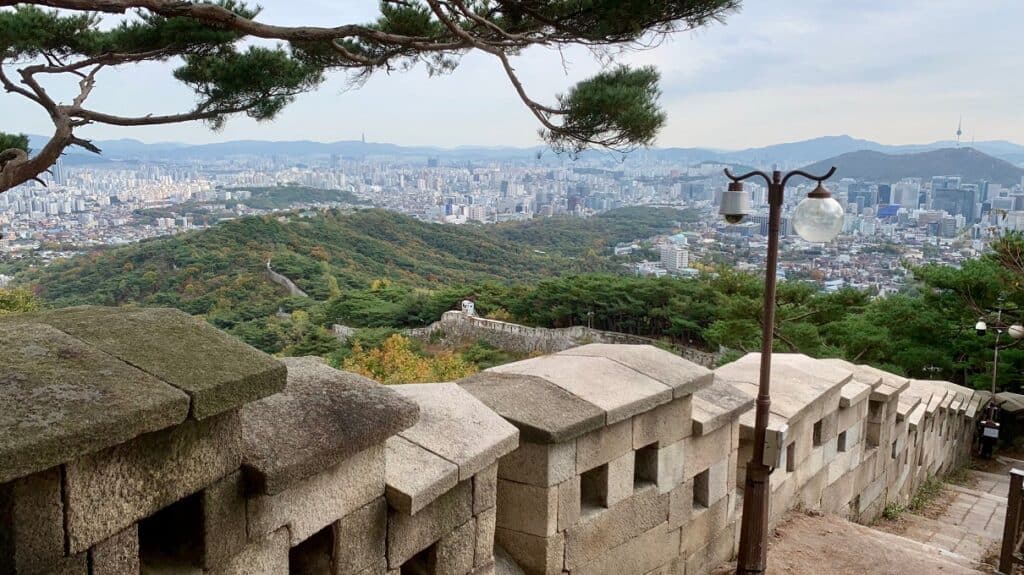
Ancient city wall around Seoul for older budget slow travelers
Ellen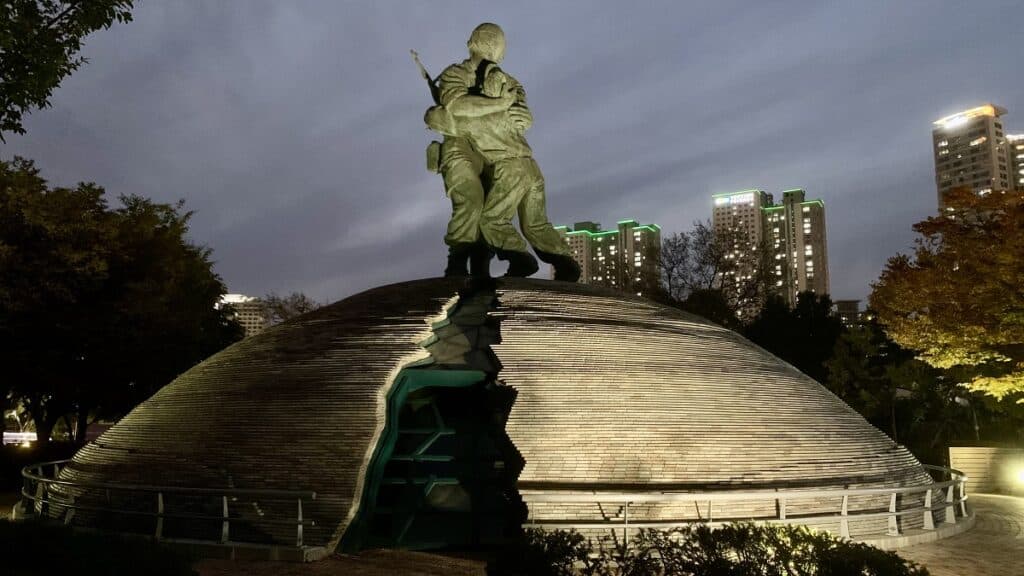
What it’s like for a traveler near the Korean border in these crazy times
Ellen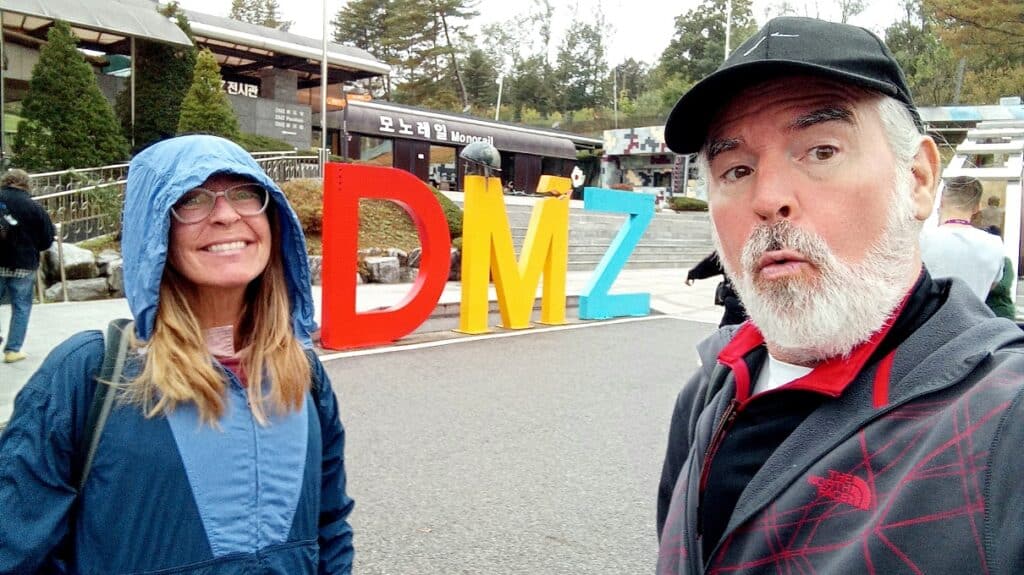
Korean DMZ: What it’s like and how to save money getting there
Theo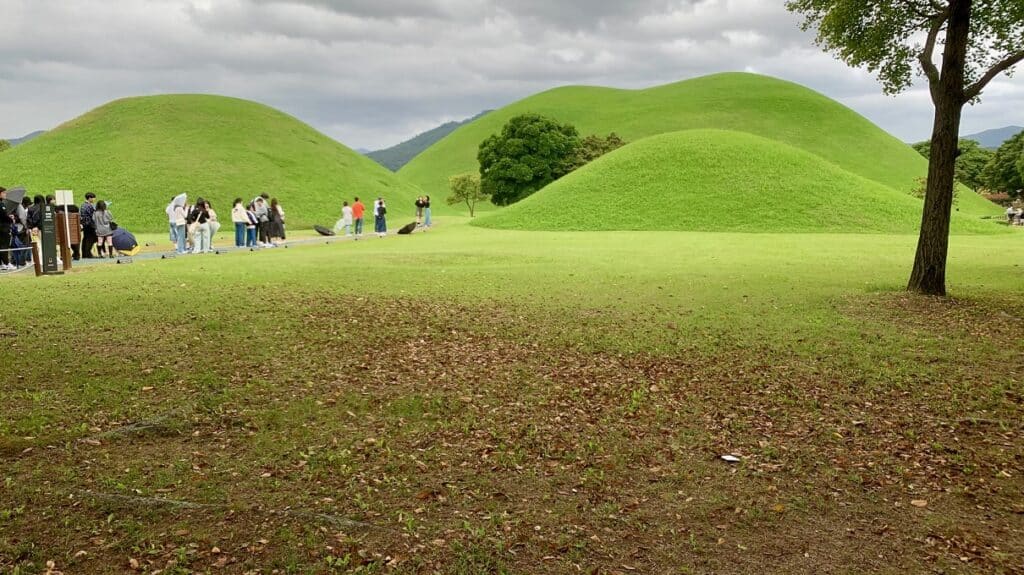
Gyeonju – Land of kings & Buddhas for budget slow travelers
Ellen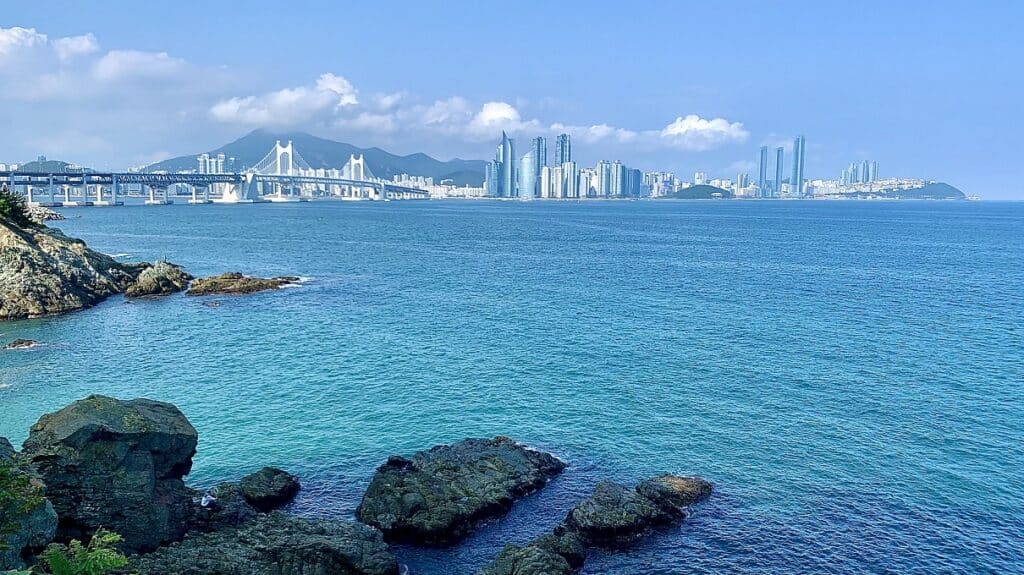
7 Great reasons budget slow travelers should visit Busan, South Korea
Ellen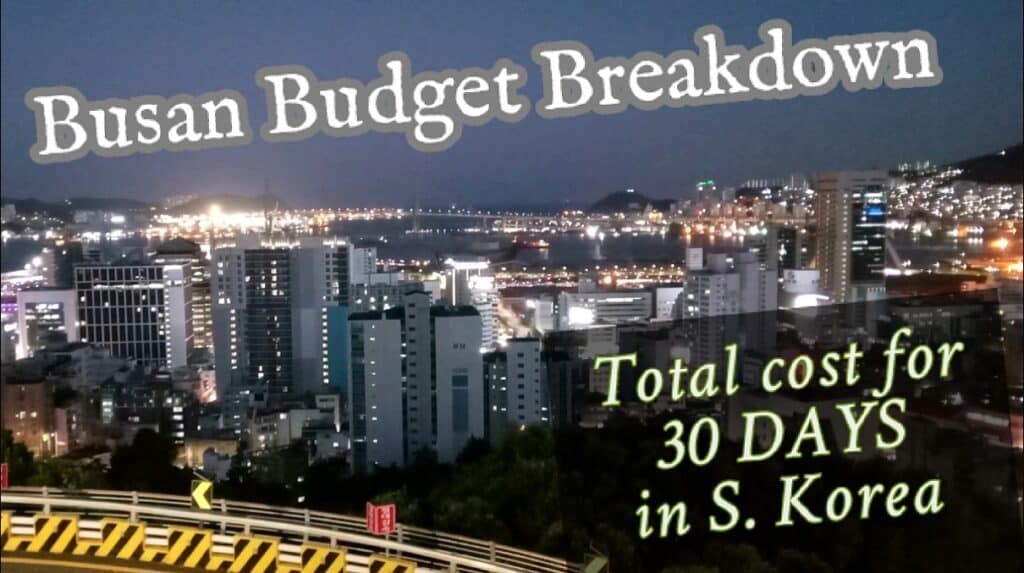
Back on budget in Busan
TheoArchives
Earth Vagabonds
Budget slow travelers in early retirement
vagabond
Vagabond: (n) A person who wanders from place to place without a home or job. (adj) Having no settled home.
slow travel
Long-term stays; use buses and trains with infrequent flights; the faster you go the less you see.

